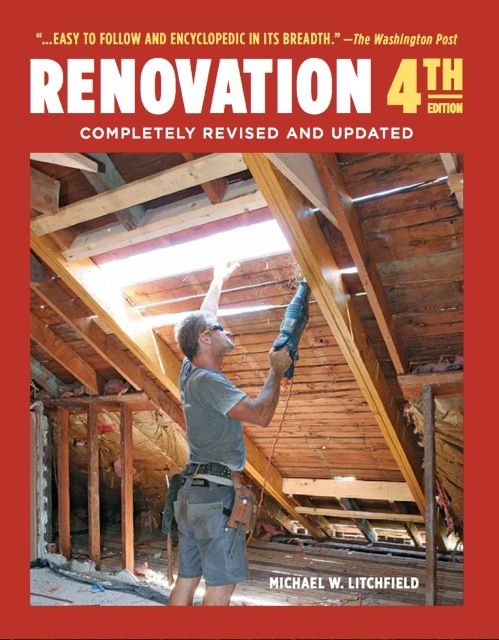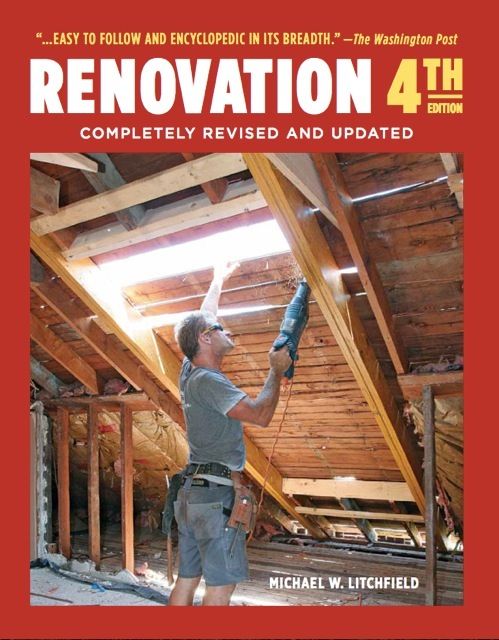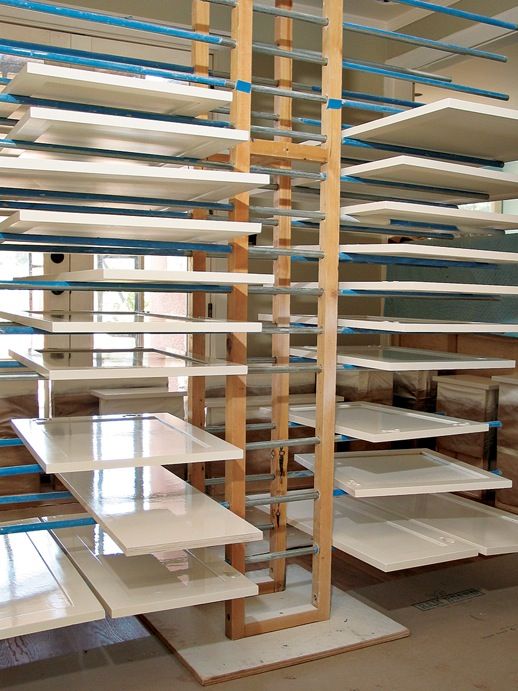A Drying Rack for the Road

This freestanding drying rack is constructed from 8-ft. lengths of ½-in. galvanized-steel electrical conduit, 2×2 frames lag-screwed together, and two pieces of ¾-in. plywood. The plywood base is roughly 30 in. by 30 in.; the plywood top can be smaller, say, 18 in. by 18 in. Drilling the holes in the 2x2s slightly larger than the conduit diameter allows quick disassembly. To keep the conduit from getting dinged during transport, store it in 3-in. plastic DWV (drain, waste, and vent) pipe with capped ends; wrapping blue tape around the conduit prevents the metal from marring newly painted cabinet doors. To avoid tipping, load the rack from the bottom, unload it from the top, and balance the weight carefully side to side.
Thanks to Greg Scillitani of Walnut Creek, CA, for sharing this tip–just one of the thousands of field-tested tips and techniques that you’ll find in Renovation 4th Edition. Brand new from Taunton Press, R4‘s 614 pages include 1,000 photos, 250 detailed technical drawings and lifetimes of experience. It would make a great gift.
© Michael Litchfield 2012
Fine Homebuilding Recommended Products
Fine Homebuilding receives a commission for items purchased through links on this site, including Amazon Associates and other affiliate advertising programs.

Handy Heat Gun

8067 All-Weather Flashing Tape

Affordable IR Camera

























View Comments
This is similar to the system I use to paint and dry plywood. I used 2x4's for framing and 2x2's where you use conduit. Extra 2x2's prevent the plywood from warping in the middle. I got the idea from the racking used in bakeries. Also I made flat furniture dolly's as a base so the racking can be moved if needed. The whole system comes apart and can be stored overhead in my shop when not in use where space is limited.
Thanks for this post.you might be interested in checking out fine luxury homes by Brejnik Fine Homes (www.brejnik.ca). They build fine luxury houses. Brejnik team consists of qualified and trusted: Architects, Interior Designers, Appraisers / Lenders, Trades & Suppliers, Geo-technical engineers, Structural Engineers, Arborists, Landscape Architects, Pool & Water Feature.
A drawing of the rack, not the book cover, is needed so one can know what is being talked about . This tip is useless without a picture. Either that or a lot more description .